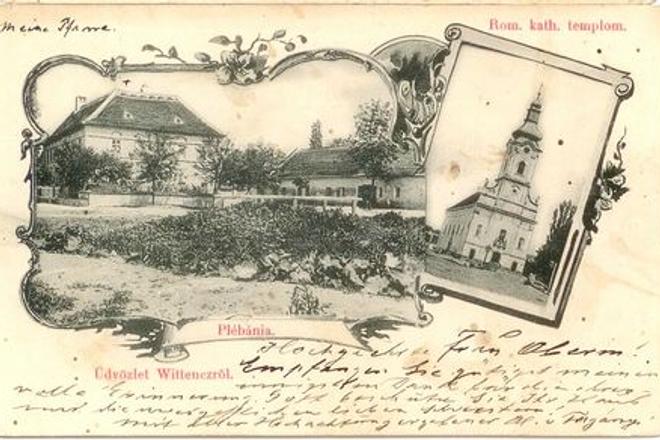This old and precious postcard of Chtelnica dates back to 1903 and its artistic expression is typical for the era of the first wave of postcards. A decorative framing and flowers – these make such postcards attractive for collectors. It is also of importance to collectors that just very few similar postcards remain and that shows in their price. But this rarely dissuades a passionate collector from acquiring an exceptional postcard for his or her collection.
The town of Chtelnica lies at the foot of the White Carpathians and the caption of this postcard has the Hungarian version of its name, Wittencz as it was produced during the times of the Austro-Hungarian Empire.
A parish house can be seen on the left side and Holy Trinity Church on the right. As early as the first half of the 16th century, a chapel stood here. The first church in Chtelnica was built in 1713 but it was severely damaged by fire and the destruction was so vast that craftsmen were reluctant to repair it.
This was not the only reason why a completely new church was built. In 1782, the nearby monastery of St. Catharina was destroyed and this was an additional reason that the number of worshippers increased in Chtelnica.
The foundation stone for a new church was laid on May 6, 1794. A few facts show how demanding it was to erect a building of this size. Altogether, 300,000 bricks were used; wood was imported from as far as northern Slovakia – on rafts – and other building materials not available locally were imported from places such as Vienna. It is interesting to note that the nails for the church were supplied by Roma residents from the nearby village of Lopašov.
The costs of building the church were covered mostly from public collections in Chtelnica and neighbouring municipalities and the parish and local landlords contributed as well. Numerous craftsmen and experts worked on the church but each family from the town also was expected to work on the church construction for several days a year.
After seven years, on June 21, 1801, the church was consecrated and opened. It was built in the Empire-Classicist style and is the only such example of this architecture in a wide area.


